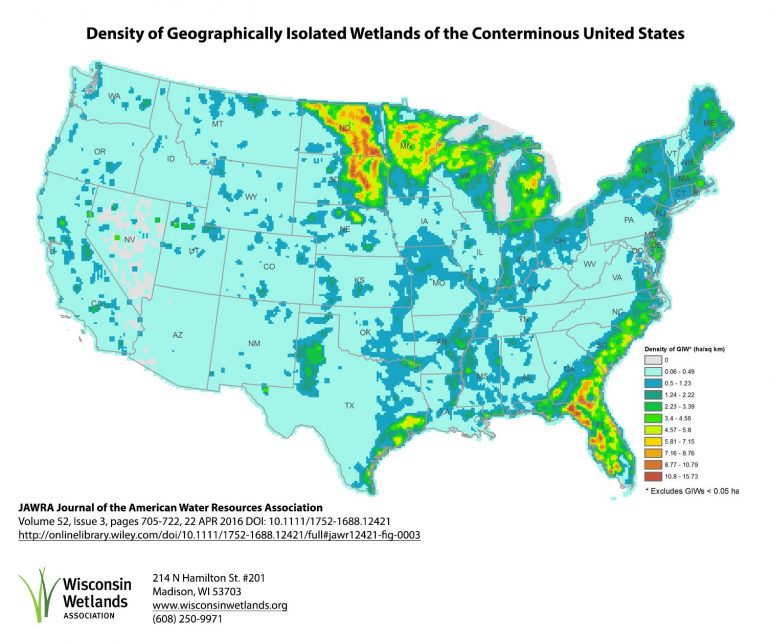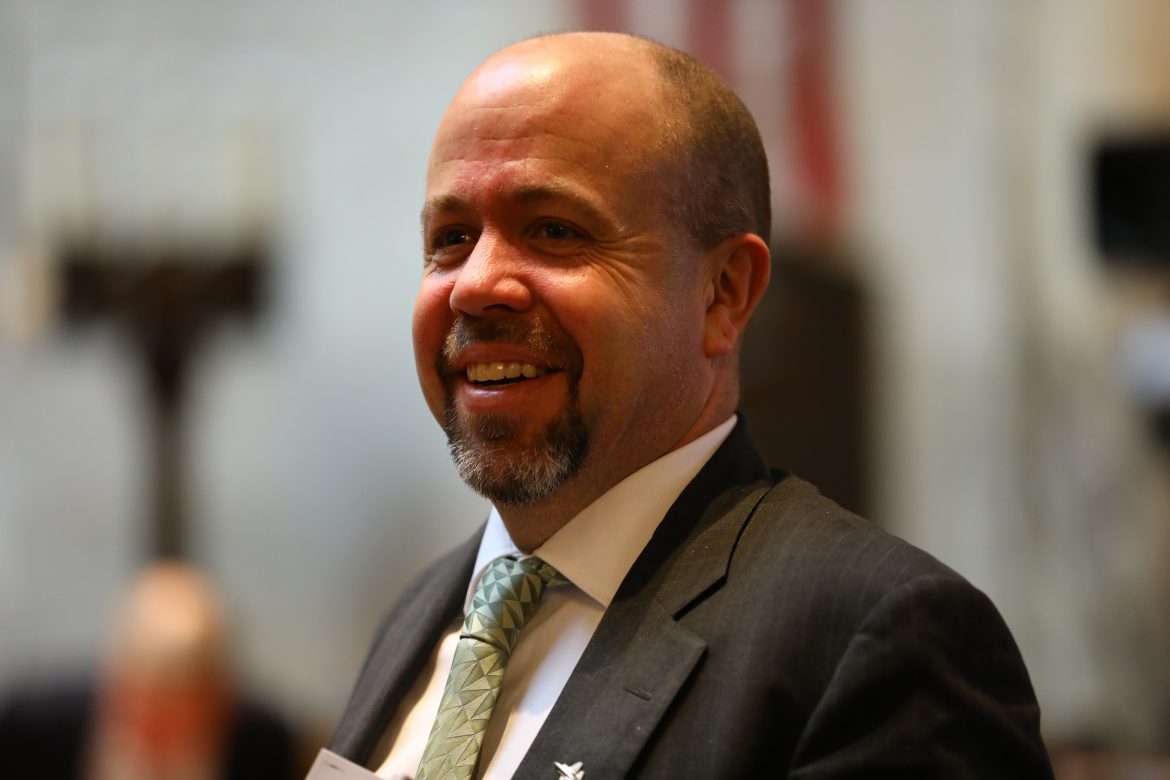In late December, Assembly Majority Leader Jim Steineke, R-Kaukauna, posted a video to his public Facebook page describing the impetus behind his bill, now heading to Gov. Scott Walker’s desk, which removes Wisconsin Department of Natural Resources’ oversight over non-federal wetlands, including artificially-created and so-called “isolated” wetlands.
In the video, Steineke claimed that Wisconsin is “one of only three states that regulates isolated and artificial wetlands the way we do.”
The Observatory investigated how Wisconsin regulates wetlands and whether the Badger State is as unique as the representative says it is.
Federal and non-federal wetlands
To understand the nature of Steineke’s claim, it is important to note the distinction between federally regulated wetlands and non-federally regulated wetlands. Permits for filling or dumping into “waters of the United States,” including federal wetlands, are issued by the U.S. Army Corps of Engineers, under Section 404 of the Clean Water Act.

Journal of the American Water Resources Association
Included beyond the scope of protections under the Clean Water Act are “isolated” or artificial wetlands that do not have “sufficient hydrologic connections” to the nation’s navigable waters. States have jurisdiction to regulate — or not regulate — these bodies of water.
In Wisconsin, the state government maintains the authority to regulate non-federal wetlands through the Department of Natural Resources, which developers or others need to work with if they want to fill in or excavate a non-federal wetland.
Is Wisconsin as unique as the Rep. Steineke says?
According to Erin O’Brien, the policy programs director for the Wisconsin Wetlands Association, Steineke’s claim is wrong.
“The claim is incorrect, however there is a little bit of nuance there,” O’Brien said. “At least 23 states in the country have some provisions on their books that go above and beyond federal law and have protections in some way shape or form for isolated wetlands.”
O’Brien cites the Association for State Wetland Managers, a nonprofit organization based in Maine that works with state, tribal and federal agencies and others on wetlands-related issues.
The analysis shared with The Observatory by O’Brien from ASWM showed that 18 states have specific policies passed or under consideration geared toward protecting and regulating non-federal isolated wetlands.
Brenda Zollitsch, policy analyst for the national wetlands managers’ association, said that in addition to those 18 states, some states “don’t ‘call out’ isolated wetlands, while still protecting them” by regulating dredging and filling activities.
The terminology also can vary. For example, the Pennsylvania Department of Environmental Protection regulates activities related to the state’s vernal pools, defined as “a natural or artificial lake, pond, reservoir, swamp, marsh or wetland.”
Steineke’s spokeswoman, Alesha Potter, said the “one of only three states” claim by the majority leader is based on information that he obtained from Paul Kent, a Madison environmental regulations attorney at Stafford Rosenbaum. Kent did not respond to multiple requests for comment.
When asked if Steineke was claiming that Wisconsin is one of only three states that has any regulations for non-federal wetlands, Potter said Steineke meant that Wisconsin is one of only three states that regulates artificial wetlands in any form. She also said his statement means that three states, including Wisconsin, regulate isolated wetlands in a similar way.
Our rating
On the claim that Wisconsin is one of only three states that regulates artificial wetlands in any form, The Observatory finds this claim unobservable. According to O’Brien, discussions of non-federal wetlands outside of Wisconsin usually do not put isolated and artificial wetlands into separate categories. Zollitsch was also unaware of how other states regulate artificial wetlands.
On the claim that Wisconsin is one member of a group of three states that regulates isolated wetlands in a similar way, The Observatory also rates this claim as unobservable.
It is unclear whether any of the 18 states in the ASWM analysis have the exact regulations that Steineke may have been referring to in his comments. Kent did not respond to requests for comment. Nor could Alesha Potter shed additional light on Steineke’s exact position.
“It may be correct that only three states’ laws are structured like ours,” said O’Brien, of the Wisconsin Wetlands Association, “but it is incorrect to say we’re one of only three states that have enacted protections.”
Sources:
Environmental Protection Agency, EPA Section 404 website, accessed March 12, 2018
Wisconsin Department of Natural Resources, DNR Wetlands website, March 12, 2018
Association for State Wetland Managers website, accessed Feb. 13, 2018
Washington Department of Ecology, Focus on Regulating Isolated Wetlands, 2011
Association of State Wetland Managers (ASWM), Summary of Initial Findings on State Isolated Wetlands Regulations, Oct. 11, 2017
Wisconsin Legislative Reference Bureau, Assembly Bill 547, 2017
Brenda Zollitsch, ASWM, emails, Oct. 11, 2017
Assembly Majority Leader Jim Steineke’s Facebook video, posted Dec. 20, 2017
Wisconsin Wetlands Association, Erin O’Brien, phone interview, Feb. 15, 2018
Wisconsin Wetlands Association, Erin O’Brien, email, Feb. 15, 2018
Office of Assembly Minority Leader Jim Steineke, spokeswoman Alesha Potter, phone interviews, Feb. 13 and Feb. 16, 2018

